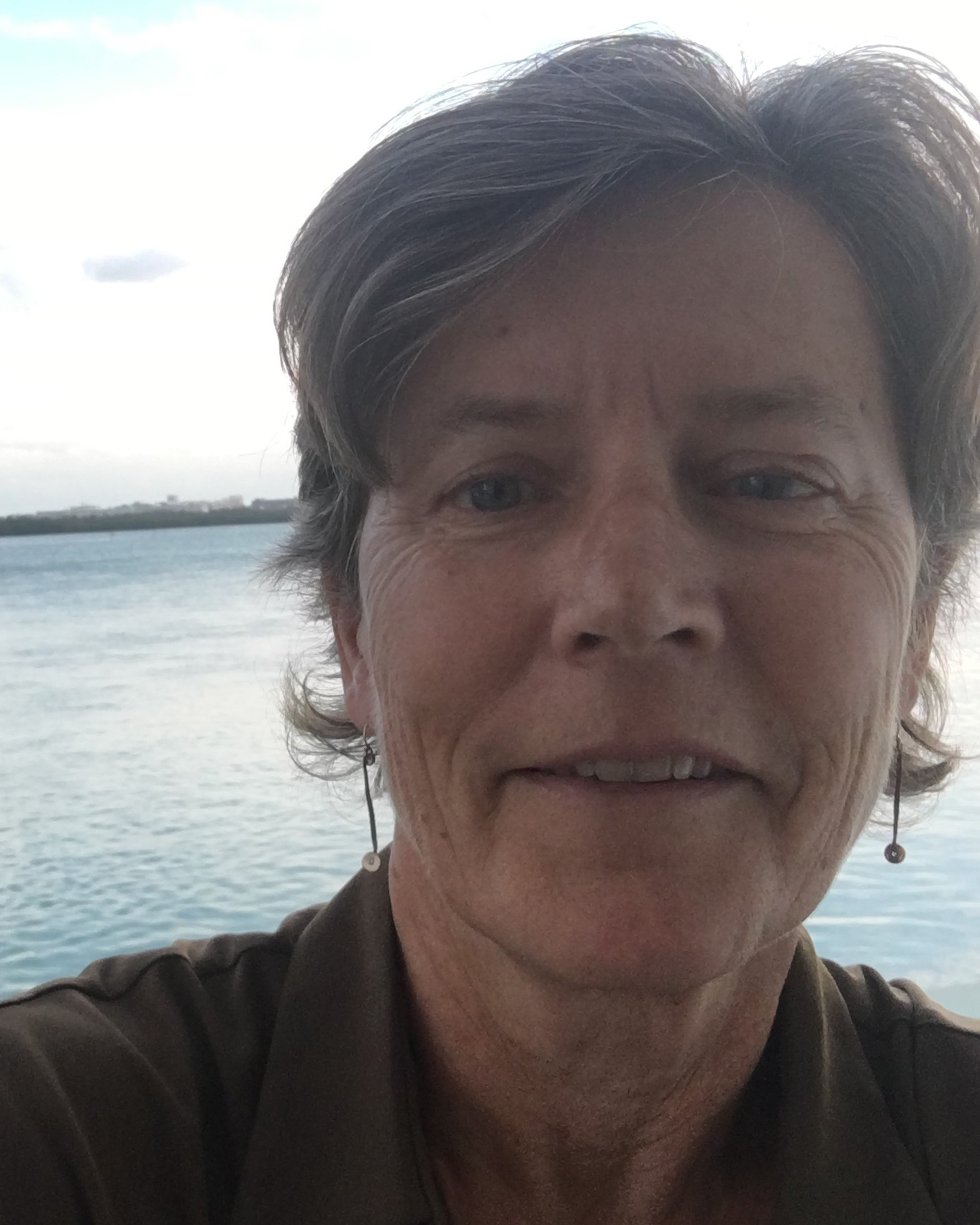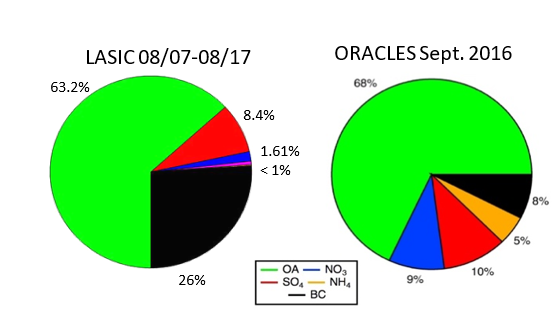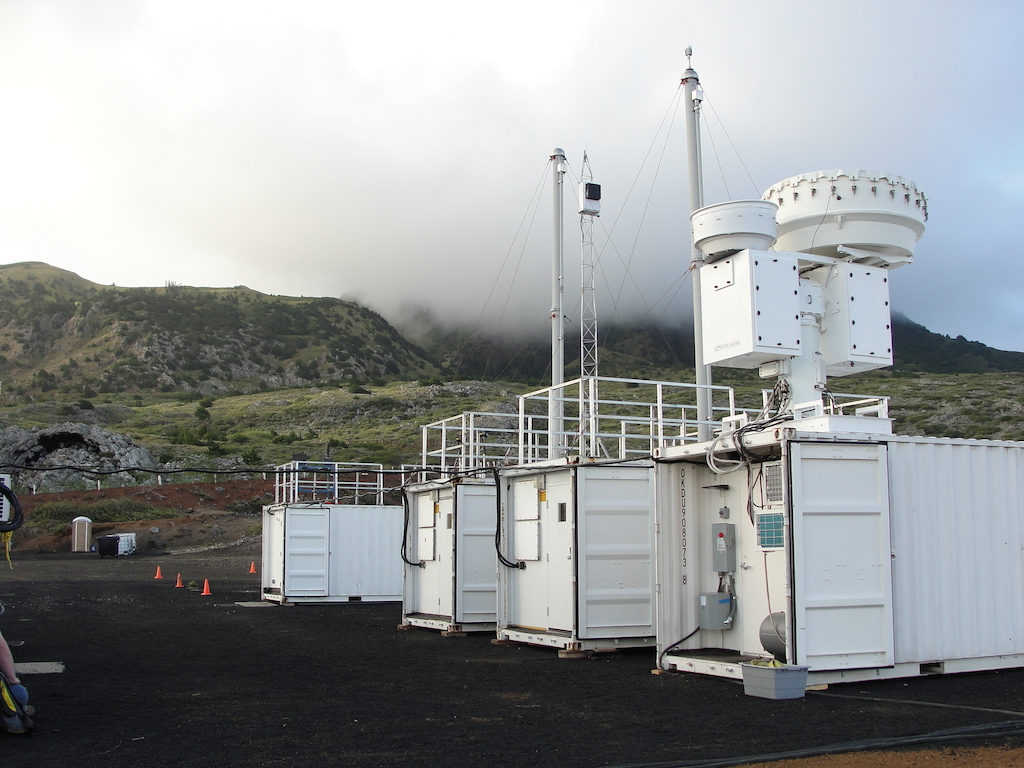LASIC Findings Integral to Southeast Atlantic Workshop
Published: 20 June 2020
Editor’s note: From June 2016 through October 2017, ARM conducted the Layered Atlantic Smoke Interactions with Clouds (LASIC) field campaign on Ascension Island in the South Atlantic Ocean. LASIC focused on smoke aerosols from African biomass fires and their interaction with clouds while moving over the Atlantic. From mid-August to mid-September 2017, the U.K. CLoud-Aerosol-Radiation Interaction and Forcing: Year-2017 (CLARIFY-2017) campaign deployed the British BAe-146 plane from Ascension, pursuing similar goals. LASIC’s principal investigator, Paquita Zuidema, sent in the following recap of a recent virtual workshop covering LASIC, CLARIFY, and other southeast Atlantic campaigns.

We originally planned to host the May 12–14, 2020, workshop in person at the University of Miami, my home institution. There were approximately 40 registrants before the workshop went virtual because of the COVID-19 pandemic. This workshop brought together investigators involved with LASIC, the companion U.K. CLARIFY aircraft-based campaign, and the complementary NASA ORACLES, French AEROCLO-Sa, and German NaFoLiCa campaigns. It coincided with the last of the ORACLES science team meetings, which went virtual as well. As such, the workshop was an important opportunity to draw together our different scientific perspectives.
The workshop was nominally four hours a day, done to accommodate a wide range of time zones spanning from Hawaii to Israel, although we typically ran over. There were over 110 participants every day, and active collaborations are continuing post-meeting. Many of these collaborations are—or will be—published within a joint special issue of the journals Atmospheric Chemistry and Physics and Atmospheric Measurement Techniques. The issue focuses on new observations and related modeling studies of the aerosol-cloud-climate system in the southeast Atlantic and southern Africa. (Learn more about the joint special issue and how you can contribute.)
Here are some highlights from the workshop:
- Close, ongoing scientific cooperation between the campaigns is aimed at elucidating how the composition and physical and optical properties of aerosols evolve as a function of time since their emission from fires. Typically, the biomass-burning aerosol (BBA) over the southeast Atlantic is all aged beyond four days. Does the BBA continue to photo-degrade, an irreversible process? Or can a reversible gas-phase transitioning—one that depends only on temperature and humidity—explain most aerosol properties in this environment with negligible further mixing with other aerosols? LASIC arguably measured the most aged aerosol of all the campaigns, and as shown below, that aerosol is more enriched in black carbon (BC) than aerosol measured in the free troposphere closer to land. This has consequences for the single-scattering albedo (more BC means more sunlight will be absorbed per particle). LASIC measurements, in combination with the other concurrent measurements, will help unravel the relevant processes.

A preliminary mass percentage of the bulk chemical species (OA, BC, SO4, NO3, NH4) observed during LASIC in August 2017 (left) and ORACLES in September 2016 (right). The higher mass percentage of BC from LASIC suggests this aerosol is more aged and processed (including through cloud processing) than that measured during ORACLES. Further characterization of the LASIC aerosol chemical speciation monitor is still needed and sampling time periods normalized. Figures are by Allison Aiken, Los Alamos National Laboratory, and Amie Dobracki, University of Miami.
- The remote Ascension Island environment challenged the necessary instrument calibrations, and instrument intercomparisons between LASIC, CLARIFY, and ORACLES are clarifying important measurement differences. For example, differences in the measured aerosol single-scattering albedo will help us distinguish the true physical processes from instrument artifacts.
- That said, a consensus is emerging that the aerosol over the southeast Atlantic is more absorbing of sunlight than previously thought. The implications are being explored through a range of regional/global models and approaches.
- Process modeling studies focusing on the stratocumulus-to-cumulus transition in the presence of absorbing smoke are drawing on observations from several campaigns and DOE-supported modeling, with Ascension Island serving as an anchor point.

WRF-CAM5 experiments comparing Fire-On/Fire-Off conditions, developed by Pablo Saide at UCLA, are examined along Lagrangian trajectories that coincide with observations from multiple campaigns and end at Ascension Island, in a project led by Michael Diamond at the University of Washington. The goal is to understand the cloud response to shortwave-absorbing aerosol overlying the low clouds. Figure is by Diamond.
- A CLARIFY-LASIC collaboration highlights weaker entrainment of BBA within open cells of low clouds. Regional/global models struggle with the representation of such mesoscale features.
- A model-observational intercomparison is revealing model uncertainties in secondary organic aerosol processes and that most models overestimate the carbonaceous mass within the offshore boundary layer.
As a follow-on to the workshop, a breakout session is scheduled during the 2020 Joint ARM User Facility/Atmospheric System Research (ASR) Principal Investigators Meeting. The session, “Shortwave-absorbing aerosols and their interactions with the large-scale environment,” will be Wednesday, June 24, from 2 to 4 p.m. Eastern time on Zoom. (Go to the session registration links page to register.) This session will reflect advances since the mid-May workshop.

Keep up with the Atmospheric Observer
Updates on ARM news, events, and opportunities delivered to your inbox
ARM User Profile
ARM welcomes users from all institutions and nations. A free ARM user account is needed to access ARM data.


















